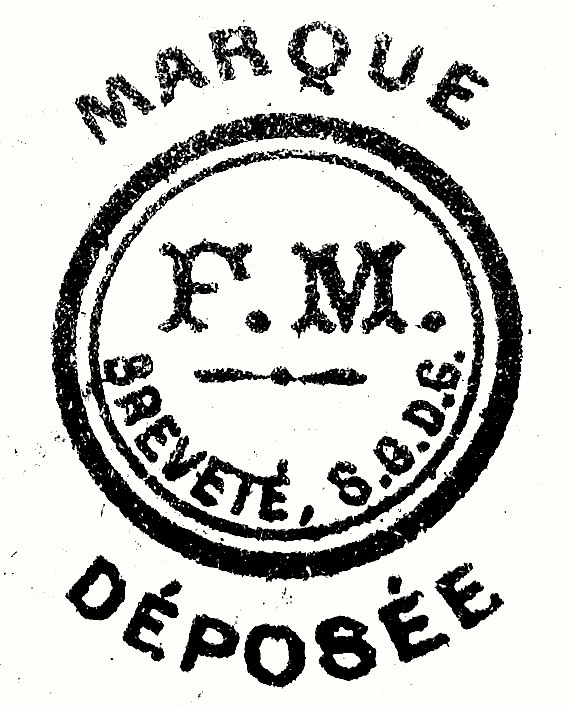In the early days Martin used a rubber band (elastic) as the drive.
By turning it on, the toy started to move.
The system consists mainly of a crank, a rubber band and a movement mechanism.
The drive mechanism was adjusted for each toy, such as up and down, right, left, spinning etc.
As an example, the first piece of Martin: the fish from 1878 Poisson Nageur
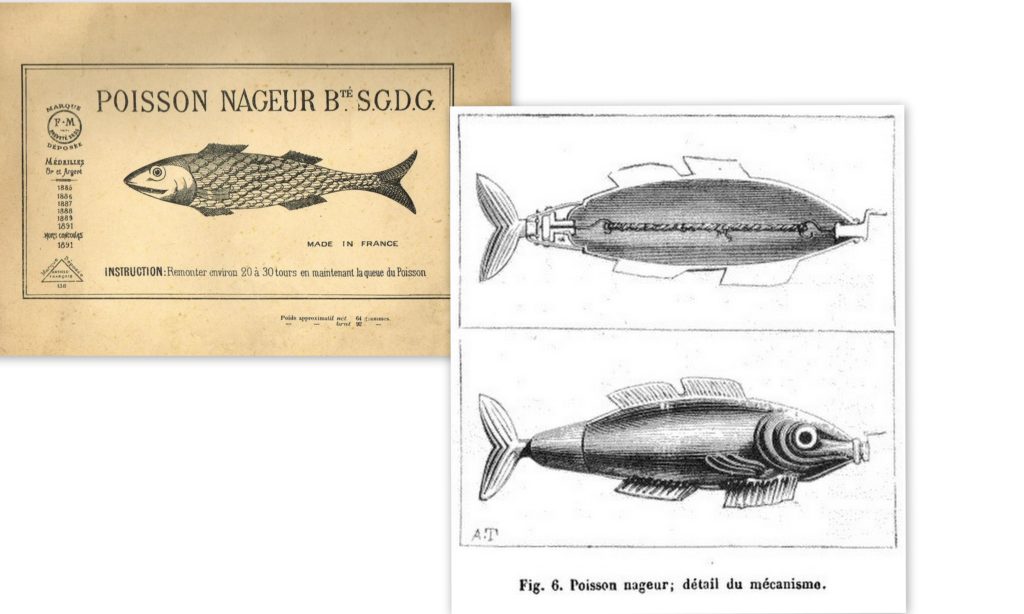
The crank is in the nose, inside the fish is the rubber band and the mechanism is on the tail.
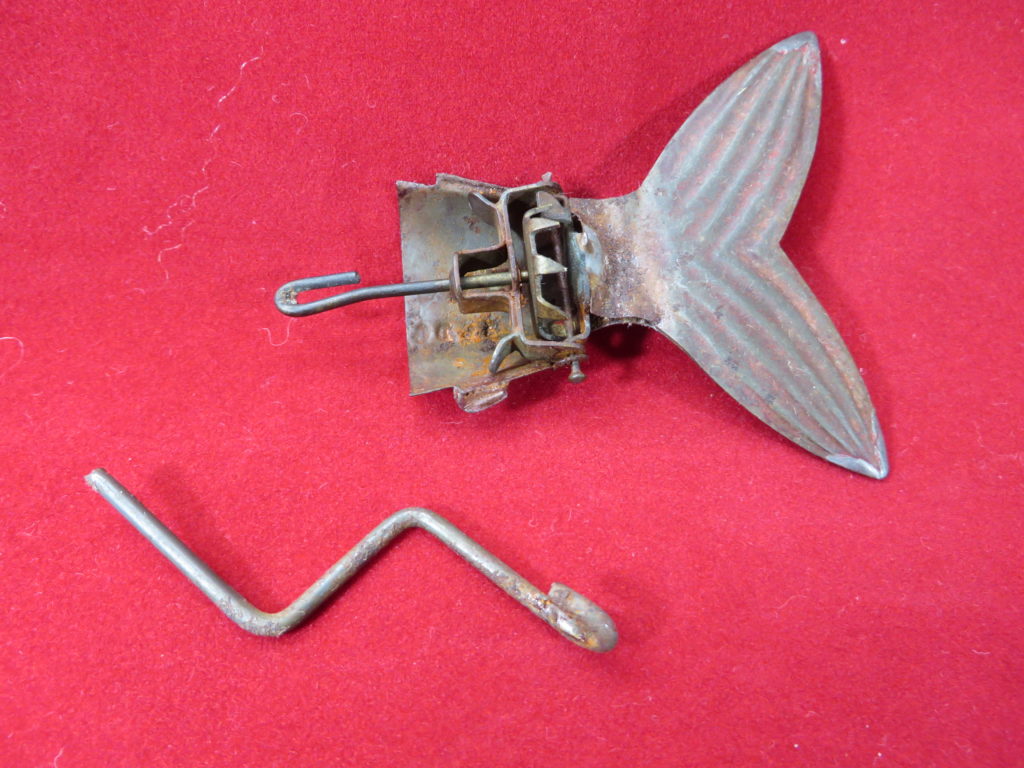
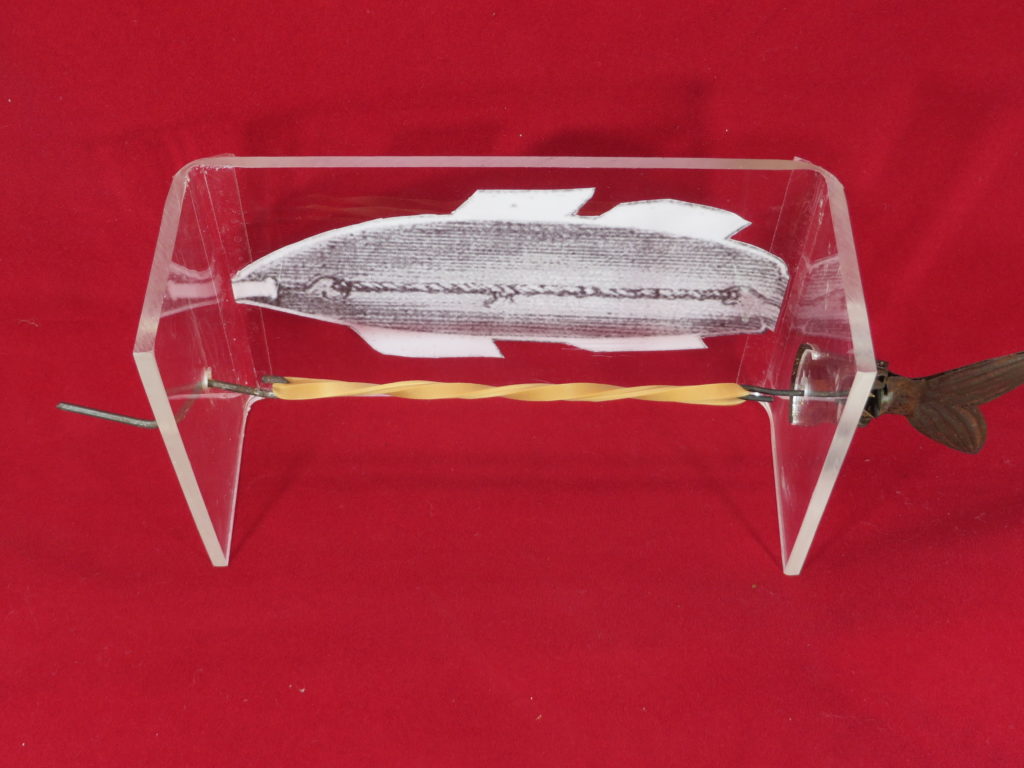
In this demo model you can see clearly the mechanism in operation,
By turning the crank and hold the tail, the rubber band is tightened (twisted)
The other side of the rubber band is hooked onto the movement mechanism, the tail.
When you release the tail again, the tail swings from right to left so that the illusion of swimming is simulated.
Simple but effective.
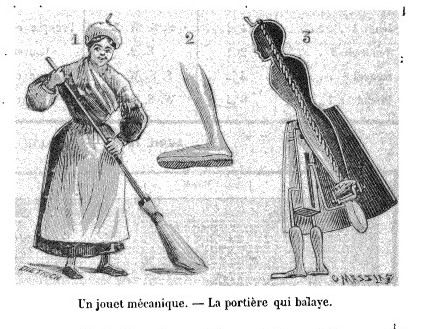
In this example of the “Ma Portière” the upper body and the broom moves from left to right, the same movement as the tail of the fish “Poisson Nageur”, the crank is on top of the head.
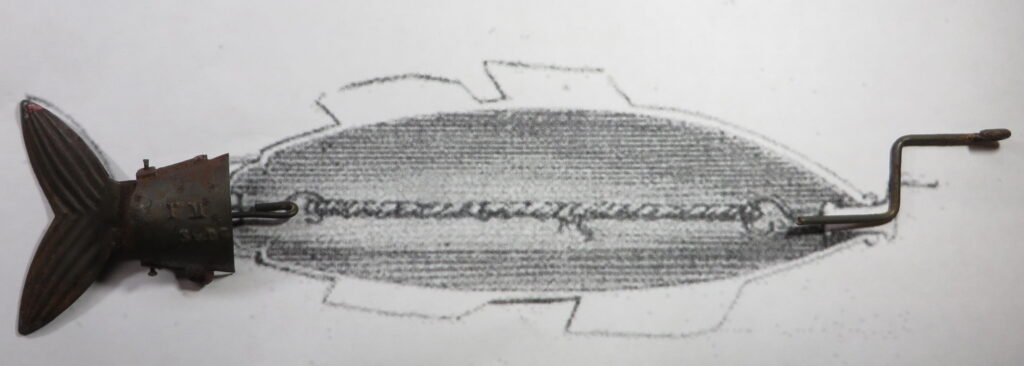
The only drawback is that the rubber band can age and then break quickly.
If it breaks, the hook and mechanism will fall off and mostly get lost.
